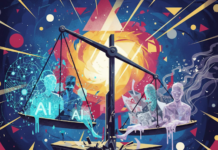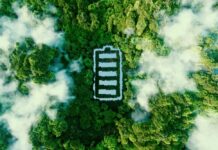The design of the Tesla Cybertruck generated a wide range of reactions when it was first unveiled in November 2019. These reactions were mixed, with some people enthusiastic about its futuristic, angular, and unconventional appearance, while others expressed skepticism or disappointment. Here are some of the key mixed reactions to the Cybertruck’s design:
Excitement and Praise:
Futuristic Appeal: Many people found the Cybertruck’s unique, polygonal design to be futuristic and unlike any other vehicle on the market. Its angular lines, stainless steel exoskeleton, and electric-powered features resonated with those who appreciated a bold departure from traditional automotive design.
Innovation: Some enthusiasts praised Tesla for pushing the boundaries of automotive design and engineering. They saw the Cybertruck as a symbol of innovation and a representation of Tesla’s commitment to disrupting the automotive industry.
Skepticism and Criticism:
Aesthetic Concerns: Critics and traditionalists were quick to point out what they considered unconventional and even unattractive design elements, such as the Cybertruck’s sharp edges and unconventional shape. They believed it deviated too far from the typical aesthetic expectations of a consumer vehicle.
Practicality: Concerns were raised about the practicality of the design for everyday use. Some questioned its ability to fit in garages or navigate tight parking spaces due to its larger dimensions.
Safety: The Cybertruck’s design also led to discussions about safety, with concerns about pedestrian safety and the potential for other vehicles to collide with its angular surfaces.
Memes and Pop Culture:
The Cybertruck’s design sparked a wave of internet memes, jokes, and parodies across social media platforms. Its distinct appearance became a pop culture phenomenon, generating both humor and commentary.
Pre-Order Interest: Despite the mixed reactions, the Cybertruck garnered a substantial number of pre-orders shortly after its unveiling. This demonstrated that, while some may have reservations about the design, there was significant interest in the vehicle’s features, including its electric drivetrain and potential performance capabilities.
Tesla’s approach to the Cybertruck’s design was undoubtedly polarizing, but it also generated significant attention and public discourse. Over time, Tesla has made some design updates based on feedback and has continued to refine the Cybertruck as it progresses toward production, which may influence how it is received by consumers and the automotive industry in the future.
Troubles Keep Plaguing the Launch of the CyberTruck
Apparently, there are so many problems with the design of the Cybertruck, that a complete re-design may be in order.
In a scathing August article from Fast Company, the Cybertruck has so many blatant design flaws, including misaligned doors and uneven surfaces, that nothing short of a complete re-design will fix the problem.
Wired magazine reported in June that a leaked internal company report revealed that the preproduction “alpha” version of the Cybertruck was still struggling with some basic problems with its suspension, body sealing, noise levels, handling. and braking.
Even Elon Musk admits there are many issues that need to be fixed. In an internal email to employees, Musk remarked “Due to the nature of Cybertruck, which is made of bright metal with mostly straight edges, any dimensional variation shows up like a sore thumb.”
Wired mentioned in their article that the vehicle was supposed to start rolling off production lines in 2021. But two years on, the trucks still haven’t been delivered, and for most customers, they won’t be until 2024 at the earliest.
Tesla stock has been taking a beating since their earnings disappointment in October. Although it’s slowly grinding its way back up, investor sentiment is still bearish on TSLA.
The ongoing delays in deliveries of the Tesla Cybertruck suggest that addressing and resolving design flaws is a critical aspect of bringing this groundbreaking vehicle to market.
The Cybertruck’s distinctive design, while eliciting both excitement and skepticism, has presented engineering and manufacturing challenges that require careful consideration and modification.
As Tesla continues to refine the design and production processes, it is likely that the company will prioritize ensuring that the vehicle meets safety and regulatory standards, addresses practical concerns, and aligns with consumer expectations.
Until these design issues are thoroughly addressed and resolved, it is reasonable to expect that delivery timelines for the Cybertruck may experience continued delays as Tesla works towards producing a vehicle that can meet the demands and expectations of its customers.

























